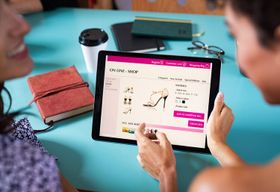Creating Relevant Personalized Product Recommendations
Updated December 2, 2024.

Including personalized product recommendations on your ecommerce store boosts the store’s popularity and customer satisfaction. Customers are more likely to return to your store if it offers product recommendations. Creating relevant recommendations is therefore important, and this post will explain how to do this.
What Are Product Recommendations?
Product recommendations are personalized suggestions that will encourage customers to buy more. Since they are tailored to specific shoppers, they should feel relevant and useful. These are created through leveraging data on past and present user behavior, and product knowledge.
There are two main types of product recommendations:
- Cross-sell Recommendations: Cross-sell recommendations are products that complement the product being purchased. For example, if someone is buying mascara, you can offer them other makeup products. The recommendations will be relevant in the broader product field. This can increase the AOV and boost the customers’ shopping experience.
- Upsell Recommendations: Upsell recommendations offer more expensive versions of the products being looked at. For example, if someone is looking at a cheap mattress, a more expensive mattress can be shown. Since people are in the mood to buy, there is a chance they are willing to spend more for a better quality product.
Three Approaches To Product Recommendations
1. Collaborative Filtering
Visitors to your site are either new or returning customers.
Returning Visitors
Returning customers can have personalized recommendations through collaborative filtering, as there is already data available on them. User profiles based on data such as:
- Purchase history
- Geographical location
- Age
- Browsing device
- Past actions
Can all be used to provide a more personalized experience. You know what the customer is looking for; so they can see relevant suggestions.
First-time Visitors
First-time visitors can be more tricky to create relevant product recommendations for. This is because there is no saved data to help understand them. You may offer them un-personalized recommendations such as the ‘Top Sellers’ or items with the best ratings.
In order to offer anonymous or first-time visitors recommendations, this can be done through an AI personalization engine. Based on click-profile data collected in real time, you can begin to understand the customer through their actions on the site. As soon as they enter your store, you can begin collecting data about them based on their actions.
This also means that no data privacy laws are compromised. As we move towards a cookie-free future, collecting data on customers needs to be consensual. Collaborative data for returning customers could be at risk of infringement here. Click-profile data however, is a great alternative.
2. Content Based Filtering
The second way of offering personalized product recommendations is through content based filtering. This relies on the products being looked at, rather than background information on the user. The product recommendations are relevant and comparable to the ones currently being looked at.
This relies on textual data to guide recommendations such as:
- Description
- Style
- Ratings
- Reviews
Products are grouped according to attributes such as size, color, fit, style etc. So, if a customer is looking at large blue dresses, recommendations should reflect this. Either recommending other blue dresses, or other large dresses, for example.
Naturally, this system has no problem with data infringement laws.
3. Hybrid Recommendation System
The third recommendation system combines both user intent and content based data. Similar products to the ones they are looking for can be offered. But also tailored recommendations based on their click-profile data and other saved information can be used.
Benefits Of Personalized Product Recommendations
When done well, product recommendations have huge benefits. They can increase the AOV and lower cart abandonment rates. They also improve customer loyalty, as they prove to the shoppers that you care about their experience. It shows an intent to engage, and customers respond well to this.
Best Practices
To ensure that your recommendations stay as optimized as possible, make sure that you continuously A/B test. This means that you can see what does and doesn’t work. All over your eCommerce store, running tests is a useful method. Recommendations are no exception. By just a small tweak, you could see a world of difference.
A second tip is to add recommendations all over your website. The more recommendations offered, the more chances you have of your shoppers engaging. Don’t limit recommendations to just the product pages, although it is necessary to have it here!
Consider adding recommendations to cart pages, collections pages, search results and anywhere else. Also, don’t forget to add recommendations in your email and SMS marketing strategies. Sending emails with product recommendations can remind customers to return to your store. Reaching out to them with relevant products is a great way to engage and boost sales.
Conclusion
Creating relevant product recommendations is a must for your eCommerce strategy. If you aren’t using it already, you are missing out on sales. This post has given you a guide on how to get started. If you follow these tips, you’ll soon see the results.







